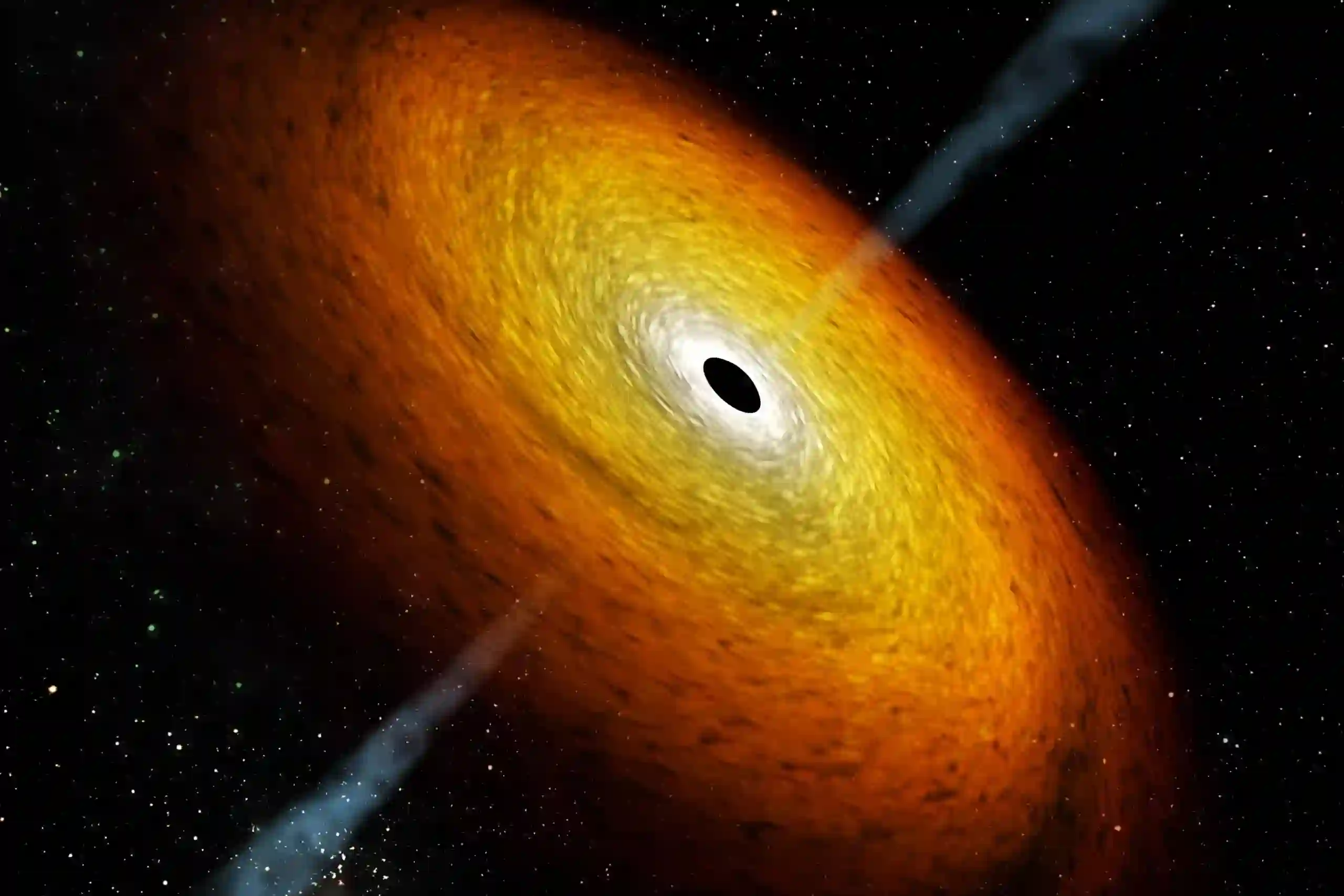
Observations of supermassive black holes in galaxies’ centers indicate a possible source of dark energy—the missing 70% of the cosmos.
The results from ancient and dormant galaxies suggest that black holes are expanding faster than expected, which corresponds to phenomena predicted by Einstein’s theory of gravity.
Black Holes Are Source Of Dark Energy
As a result, nothing new has to be added to our understanding of the cosmos to account for dark energy: black holes together with Einstein’s gravity are the source.
A team of 17 academics from nine nations, led by the University of Hawai’i and including Imperial College London and STFC RAL Space physicists, came to this result. The findings were reported in the journals The Astrophysical Journal and The Astrophysical Journal Letters.
“If the theory holds, then this is going to revolutionize the whole of cosmology.” said research co-author Dr. Chris Pearson.
Around 13.7 billion years ago, our Universe began with a Big Bang. The energy released by this explosion of space and time led the Universe to swiftly expand, with all galaxies moving away from one another.
However, due to the effect of gravity on everything in the universe, we expect this expansion to progressively slow down.
This is the Universe we thought we lived in until the Hubble Space Telescope detected something weird in the late 1990s. Observations of distant exploding stars revealed that the Universe used to expand more slowly than it does now.
To account for this, it was proposed that a “dark energy” was pushing things apart more forcefully than gravity was pulling them together.
The concept of dark energy was strikingly close to a mathematical construct created by Einstein but subsequently abandoned – a “cosmological constant” that countered gravity and prevented the Universe from collapsing.
Read more: Quaoar: Dwarf planet with mysterious ring system has been discovered by astronomer
Black Hole Formation

The result was reached after researching the evolution of black holes over nine billion years. When enormous stars reach the end of their lives, black holes develop.
They are known as supermassive black holes when they are discovered at the centers of galaxies. These contain millions to billions of times the mass of our Sun inside them, resulting in extraordinarily powerful gravity.
Black holes can grow in size by accreting matter, such as consuming nearby stars, or by merging with other black holes.
The researchers examined data spanning nine billion years to see if these processes alone could account for the emergence of supermassive black holes. The researchers focused on a type of galaxy known as giant elliptical galaxies, which evolved early in the universe and then went dormant.
Dormant galaxies have completed star formation, leaving little material for the black hole at their center to accrete, implying that any future development cannot be explained by standard astrophysical processes.
Cosmic Interaction
Further studies using similar populations of galaxies at different times in the universe’s evolution reveal that the size of the cosmos and the mass of the black holes are in good agreement.
These results suggest that black hole vacuum energy can account for the observed amount of dark energy in the cosmos.
This is the first observational evidence that black holes contain vacuum energy and are ‘coupled’ to the expansion of the universe, increasing in mass as the universe expands—a phenomenon known as cosmological coupling.
If further observations confirm it, the cosmological coupling will reshape our understanding of what a black hole is.
Read more: South Carolina tax rebate: Will you need to pay them back?

